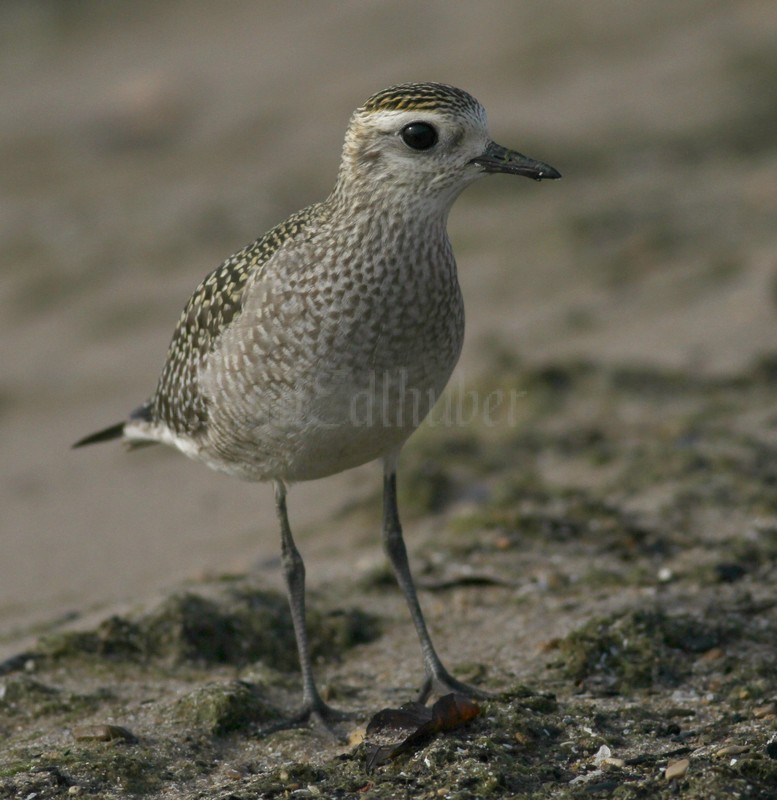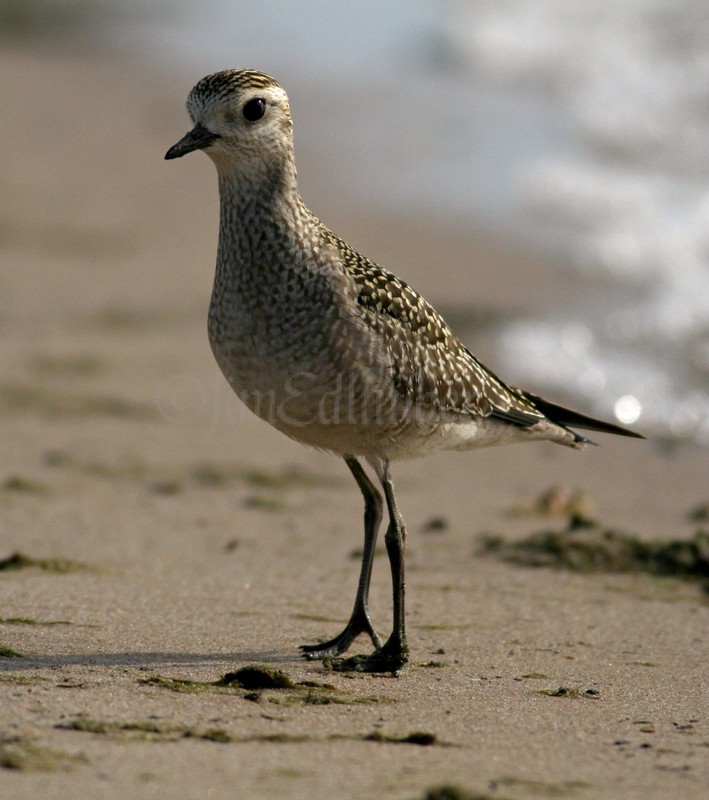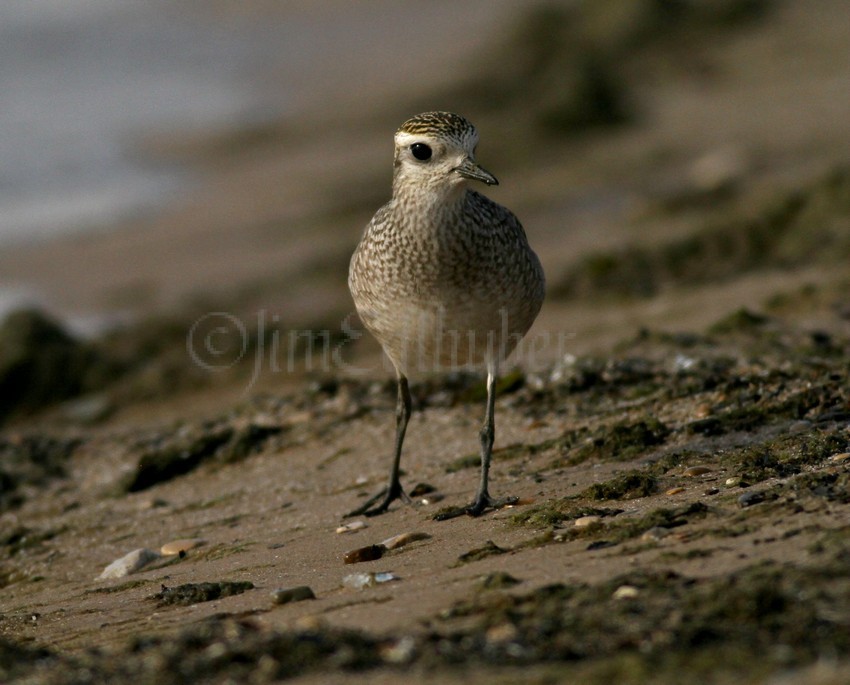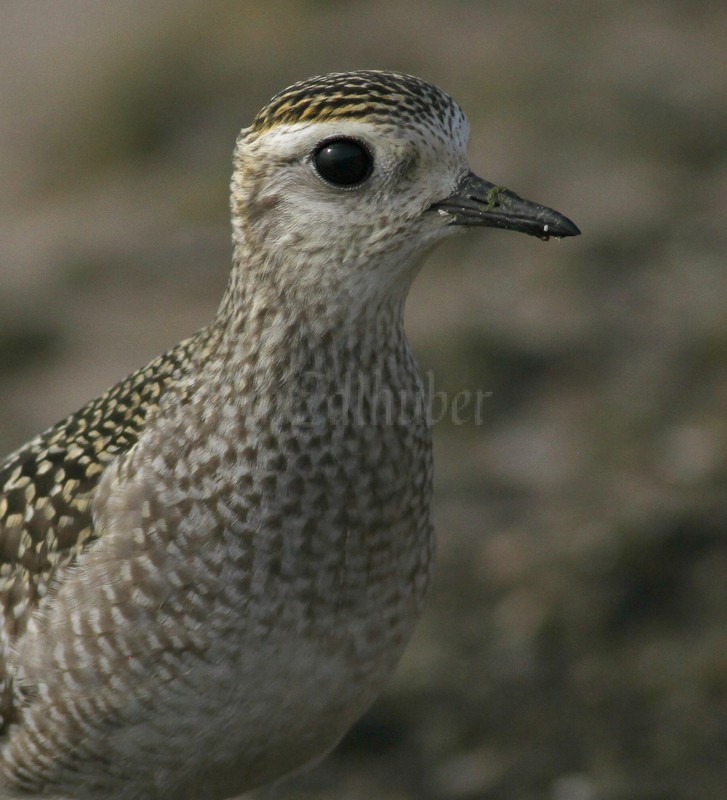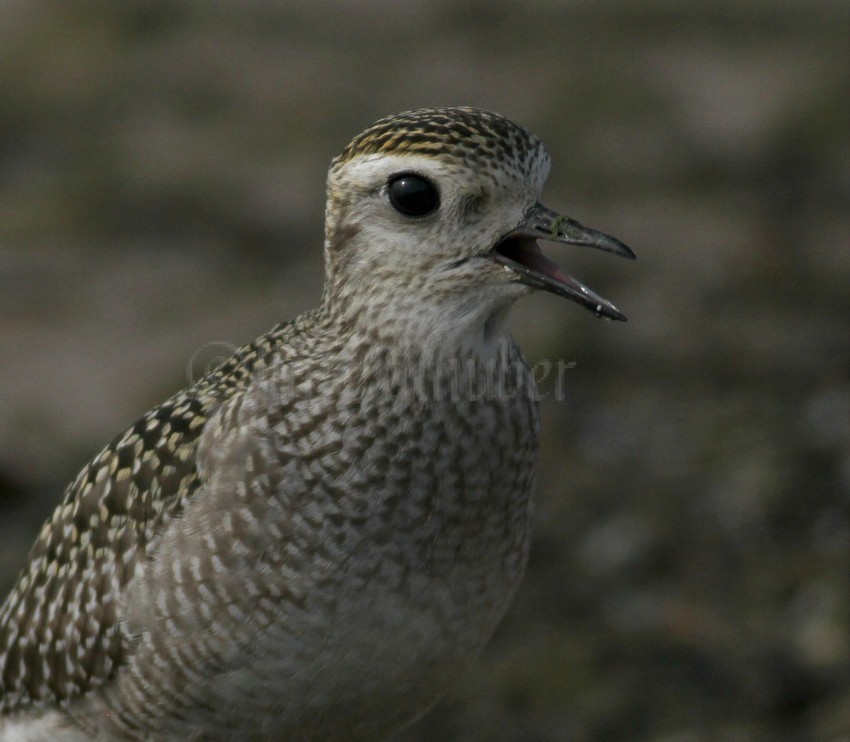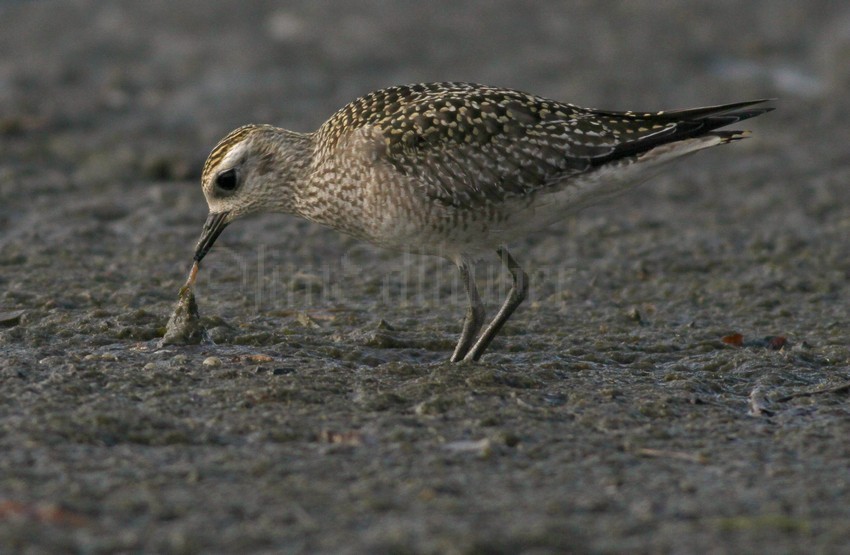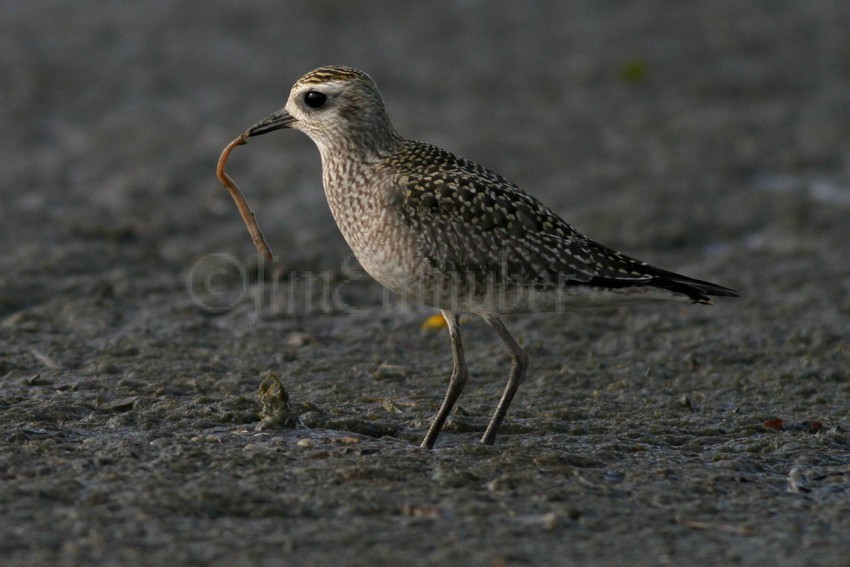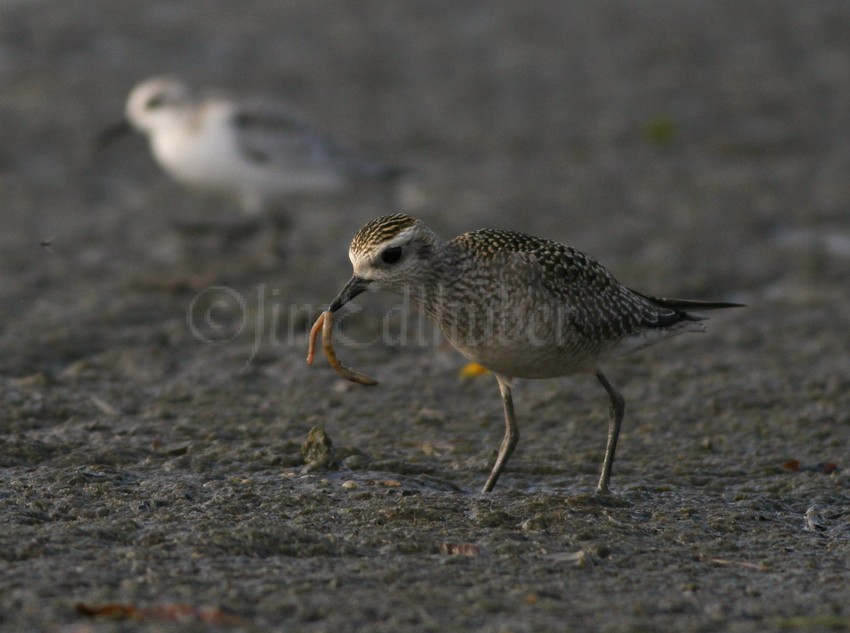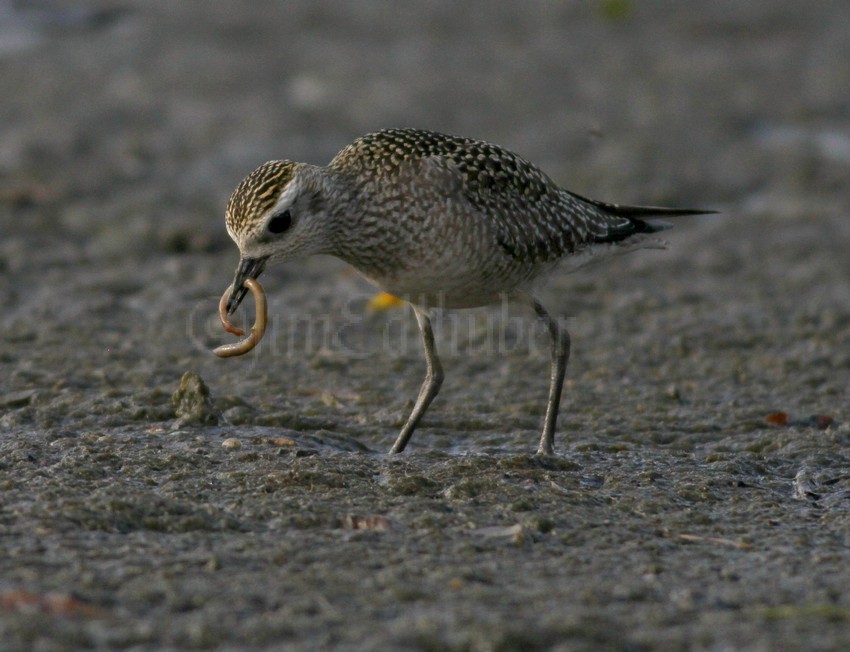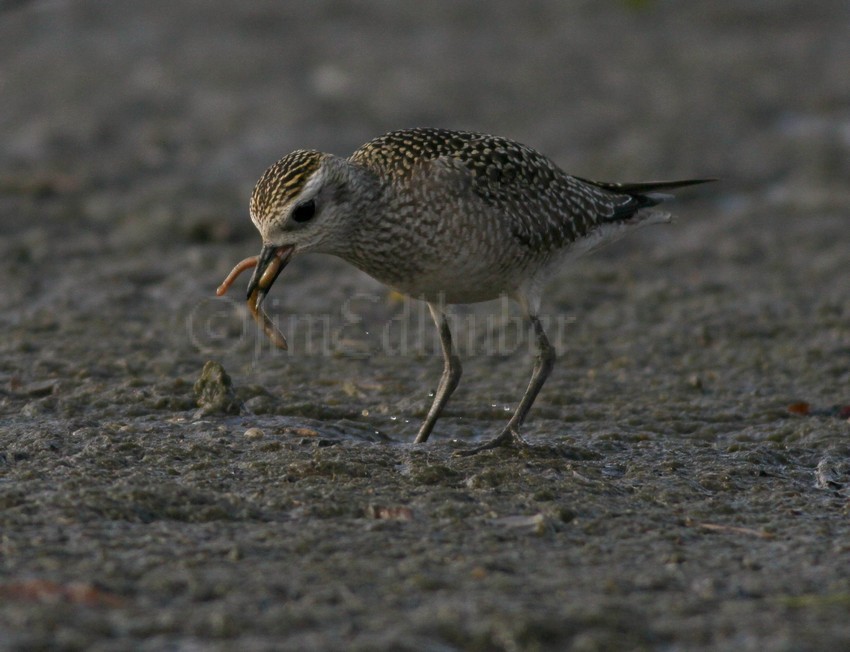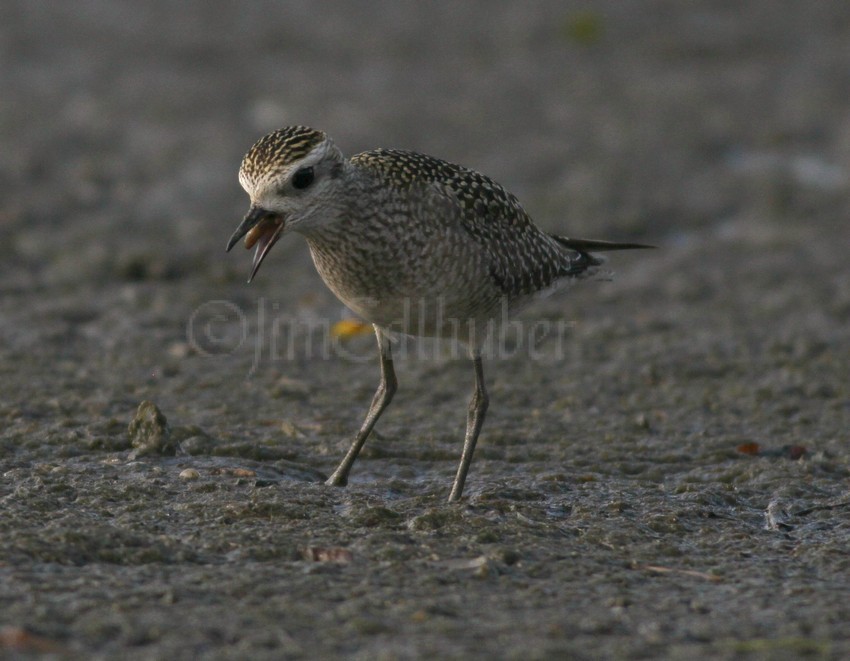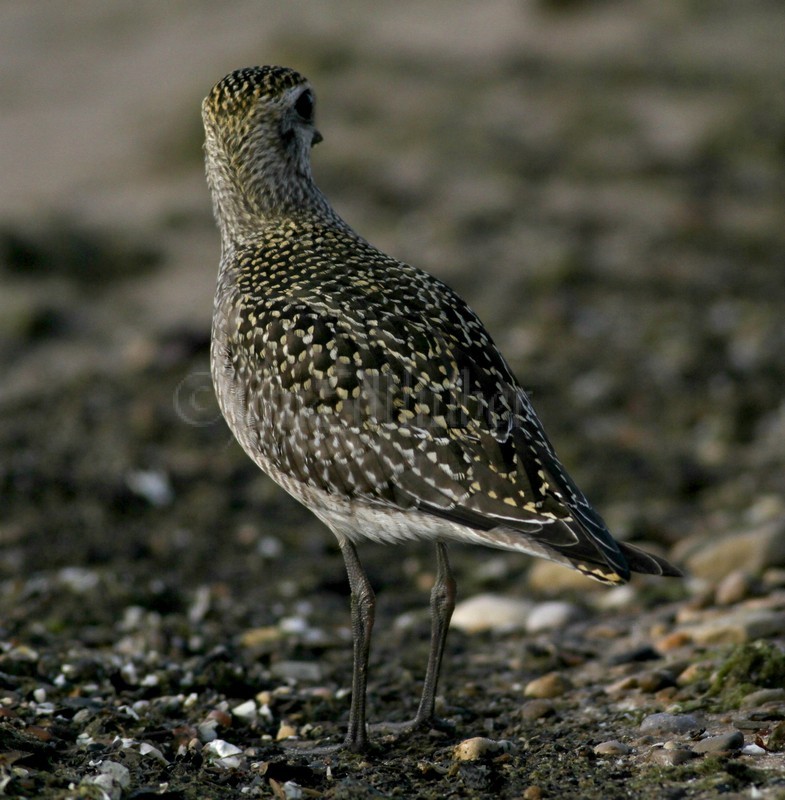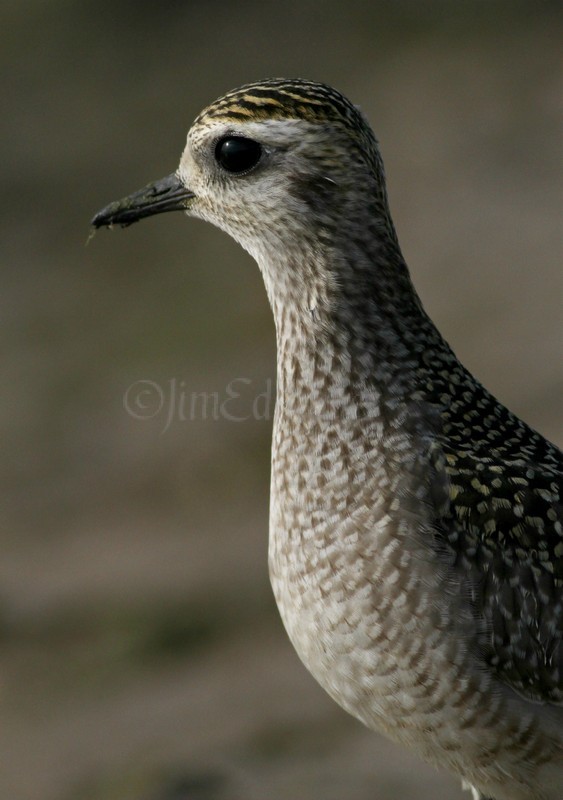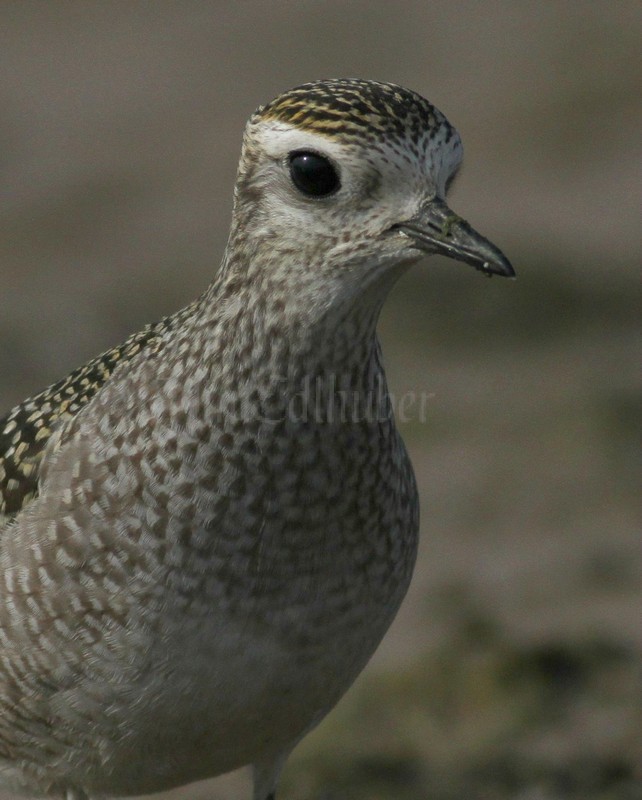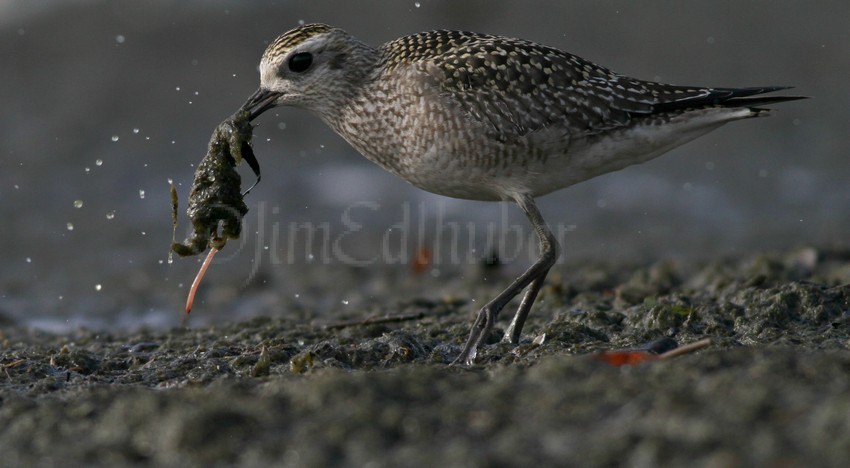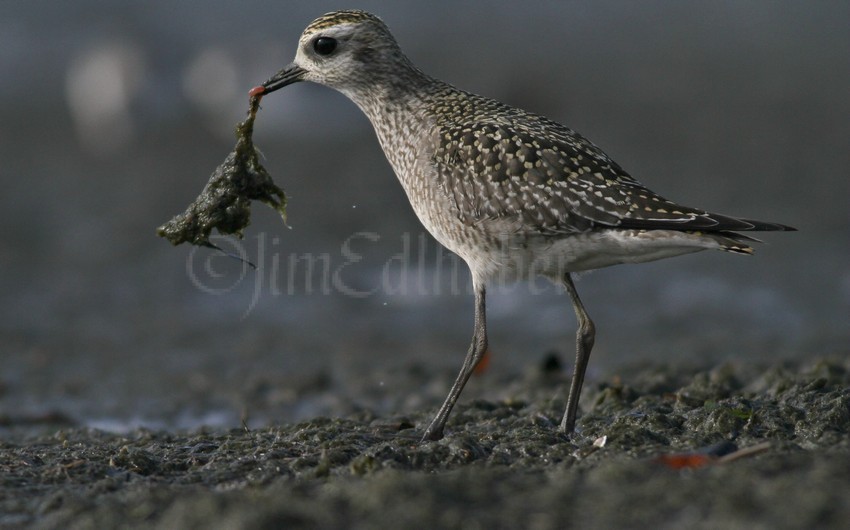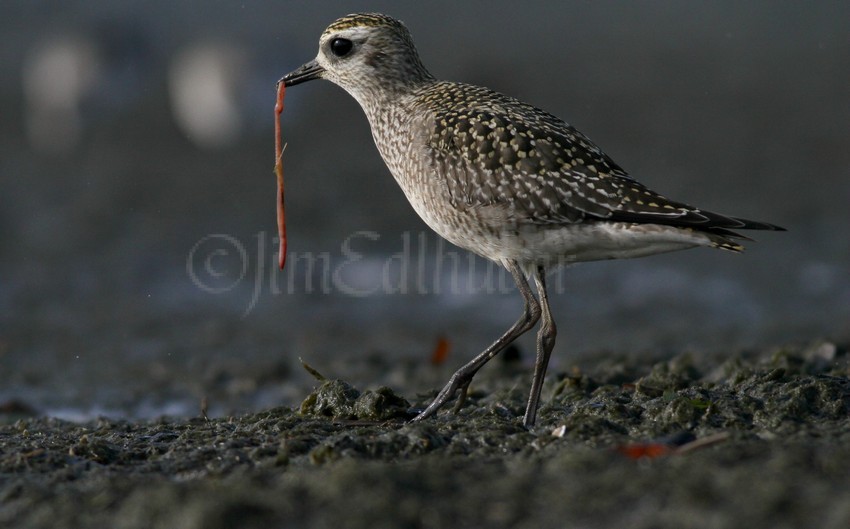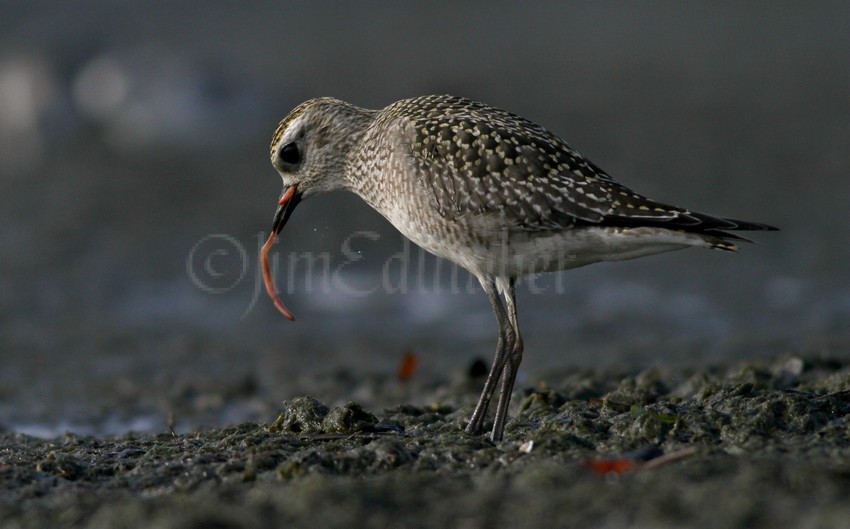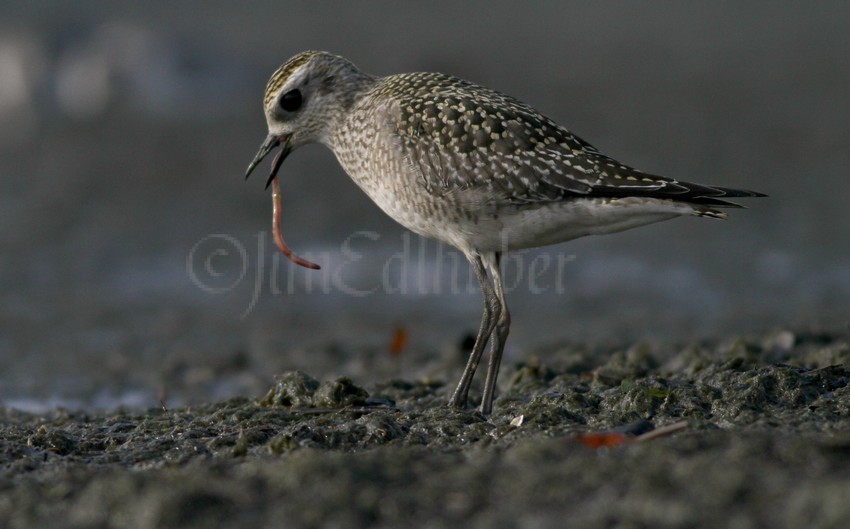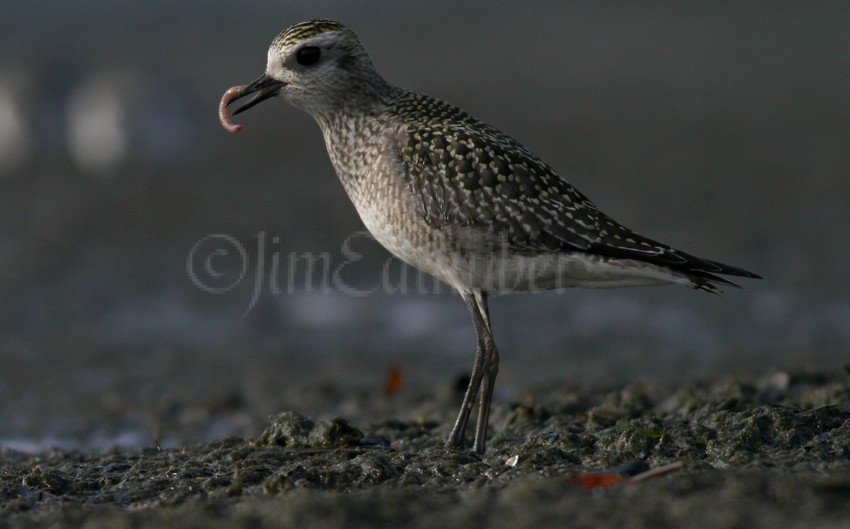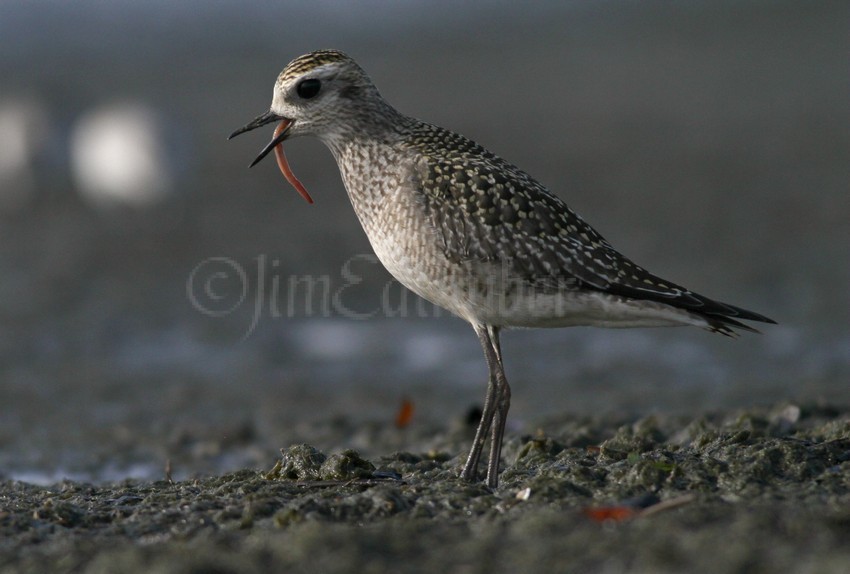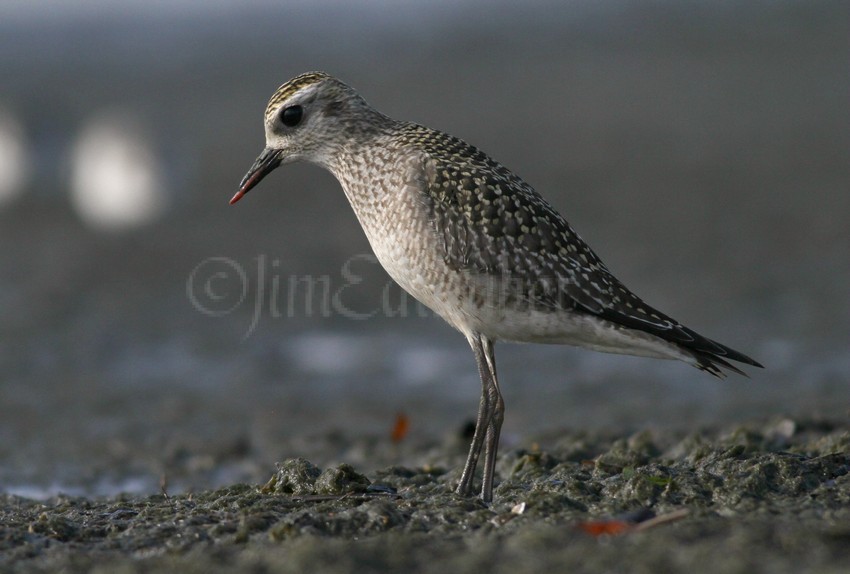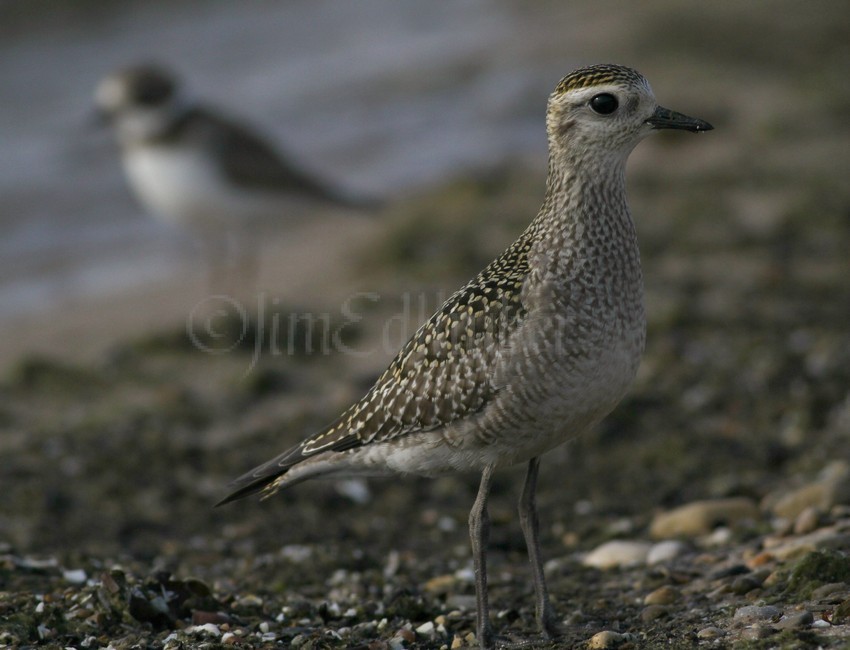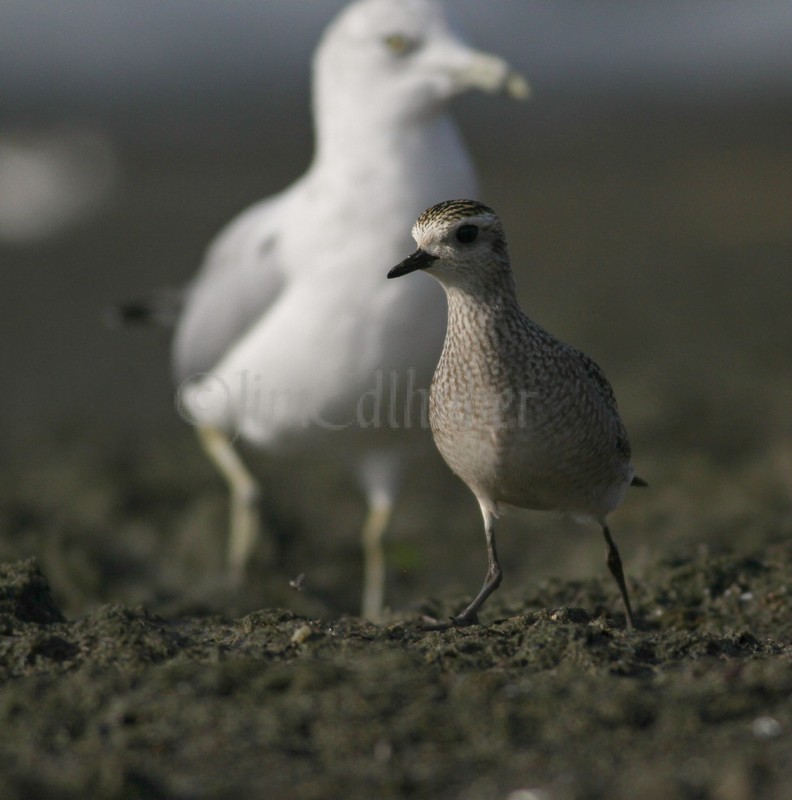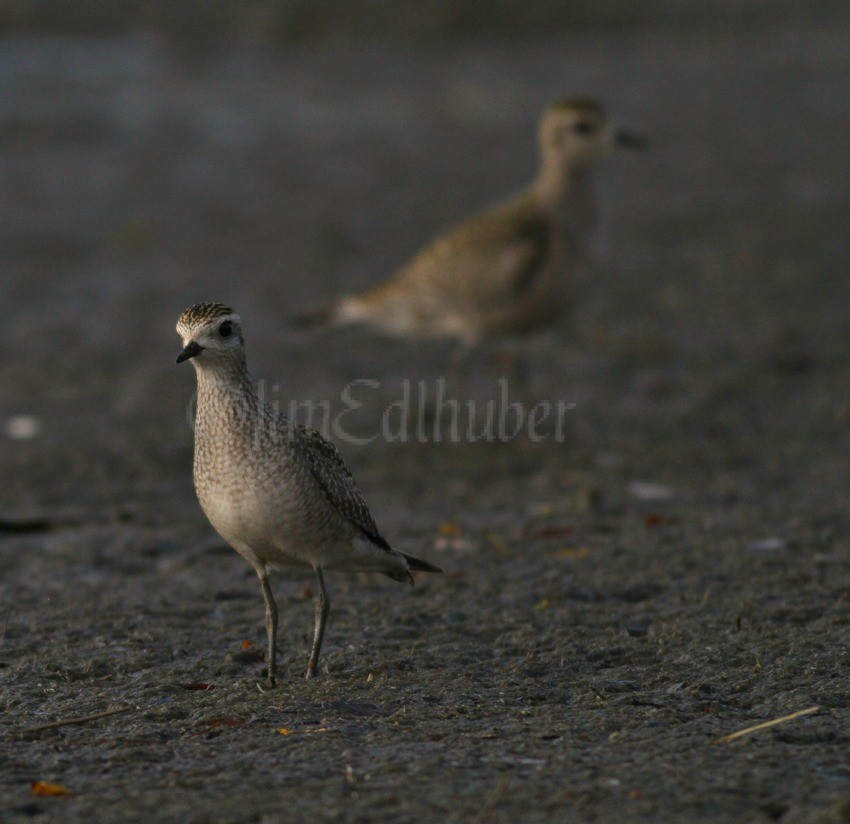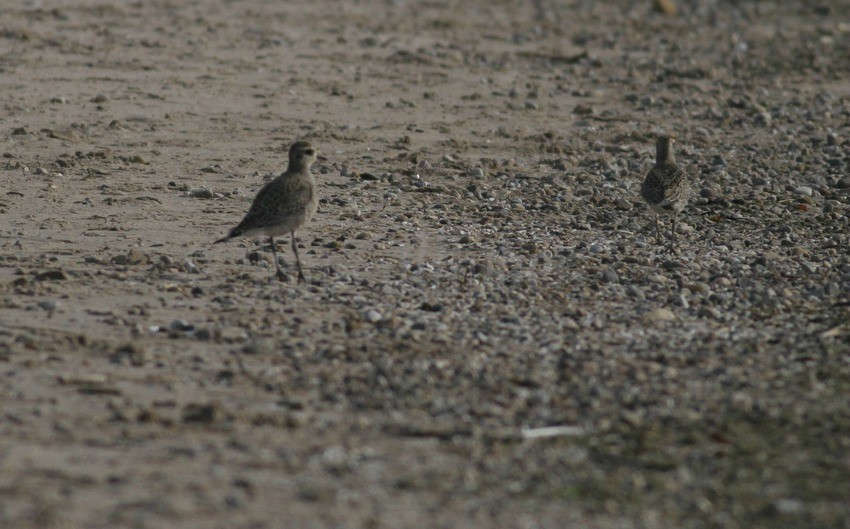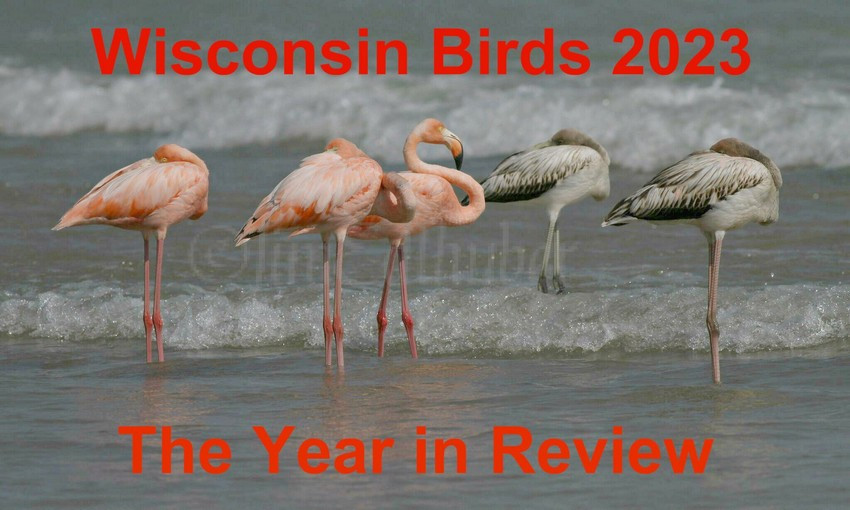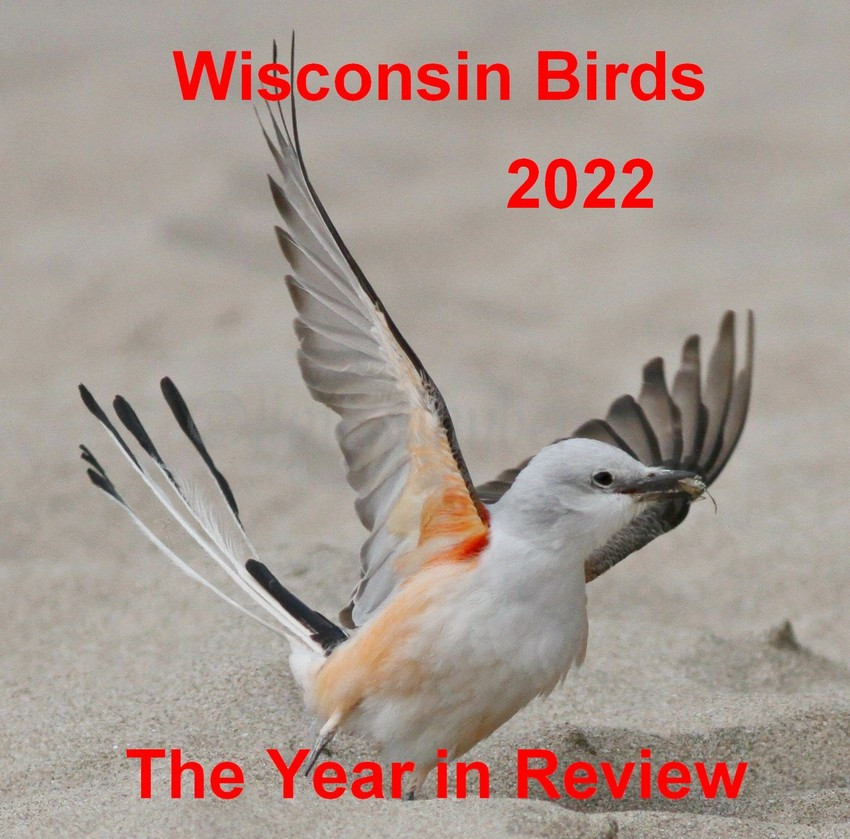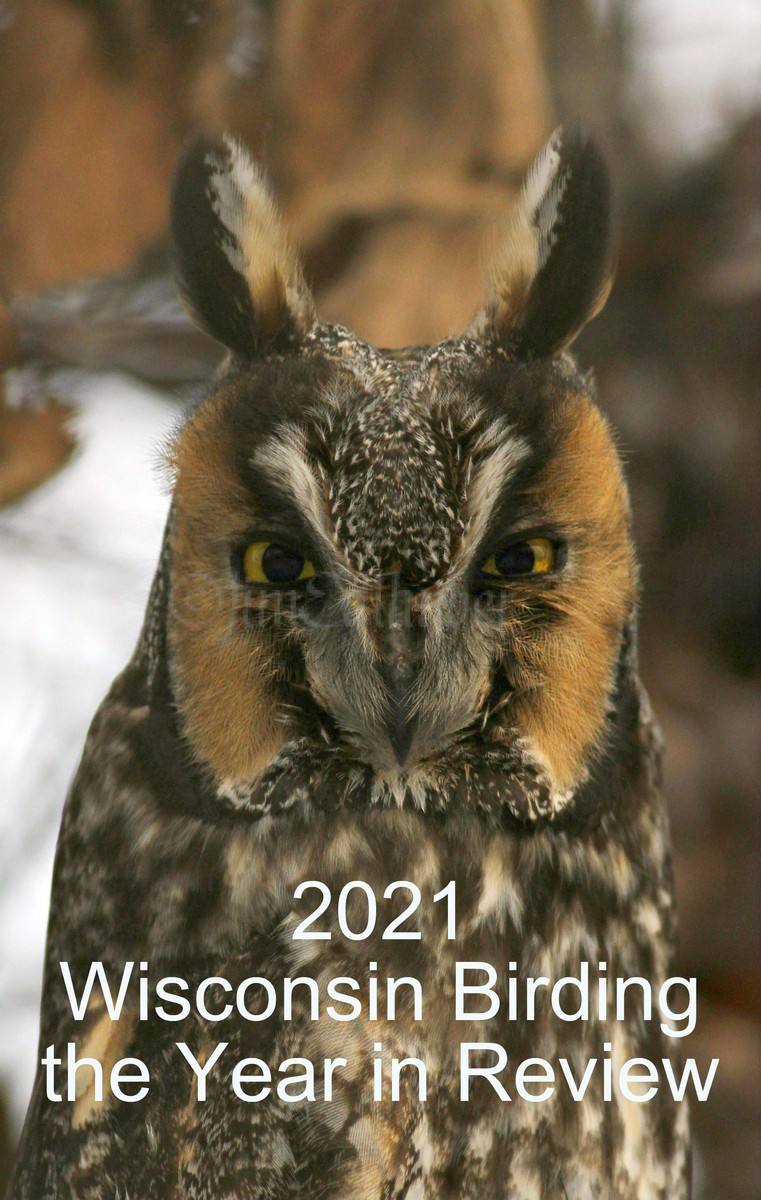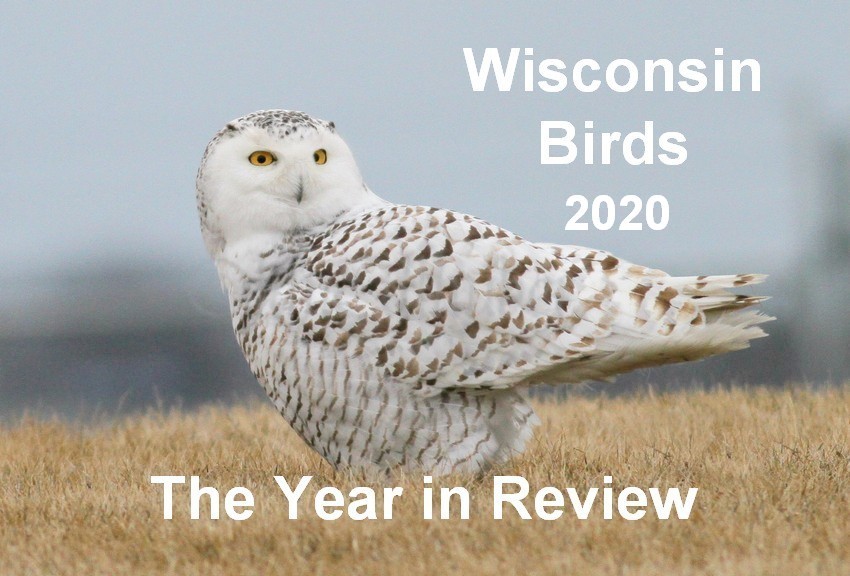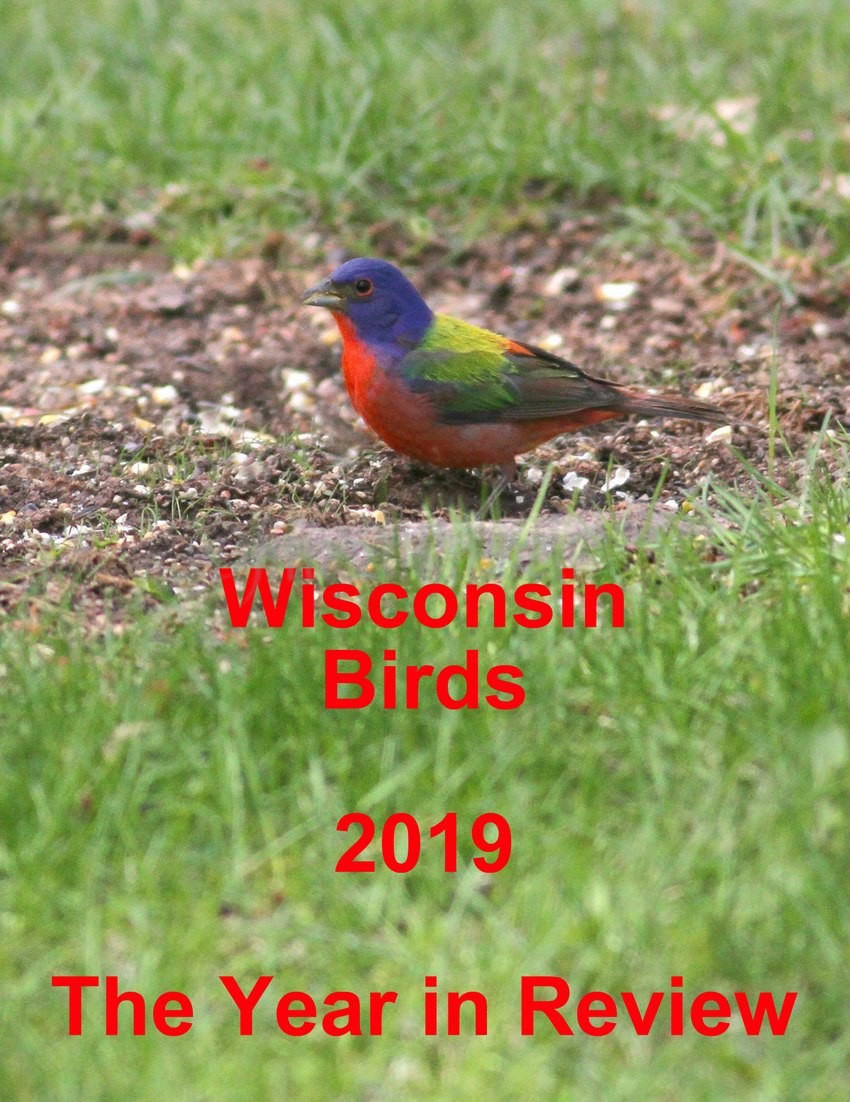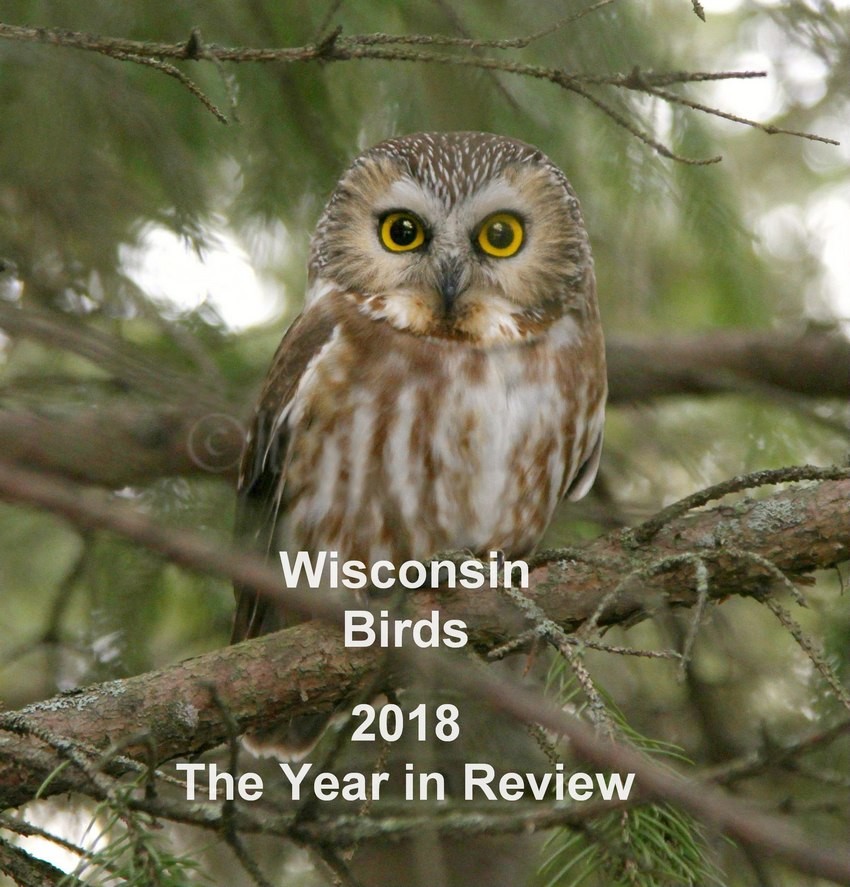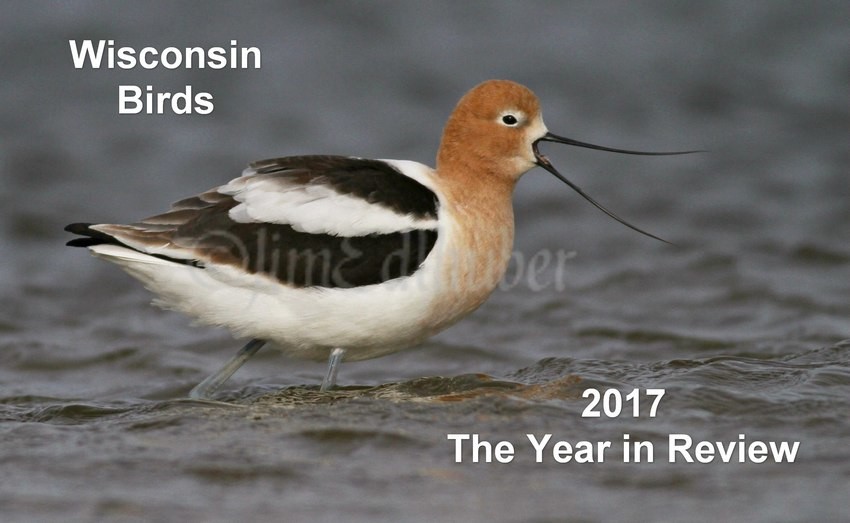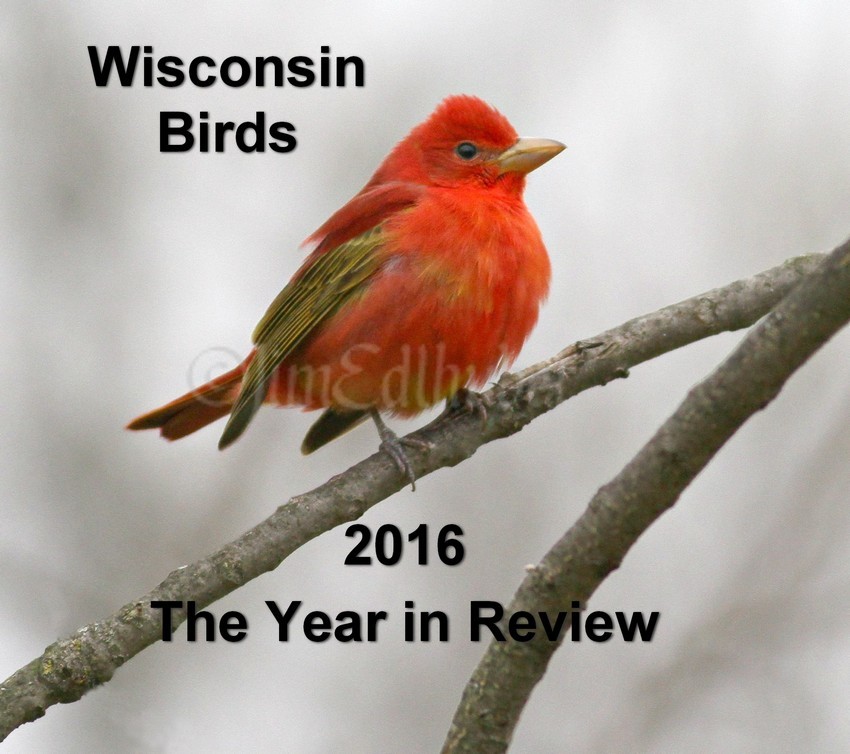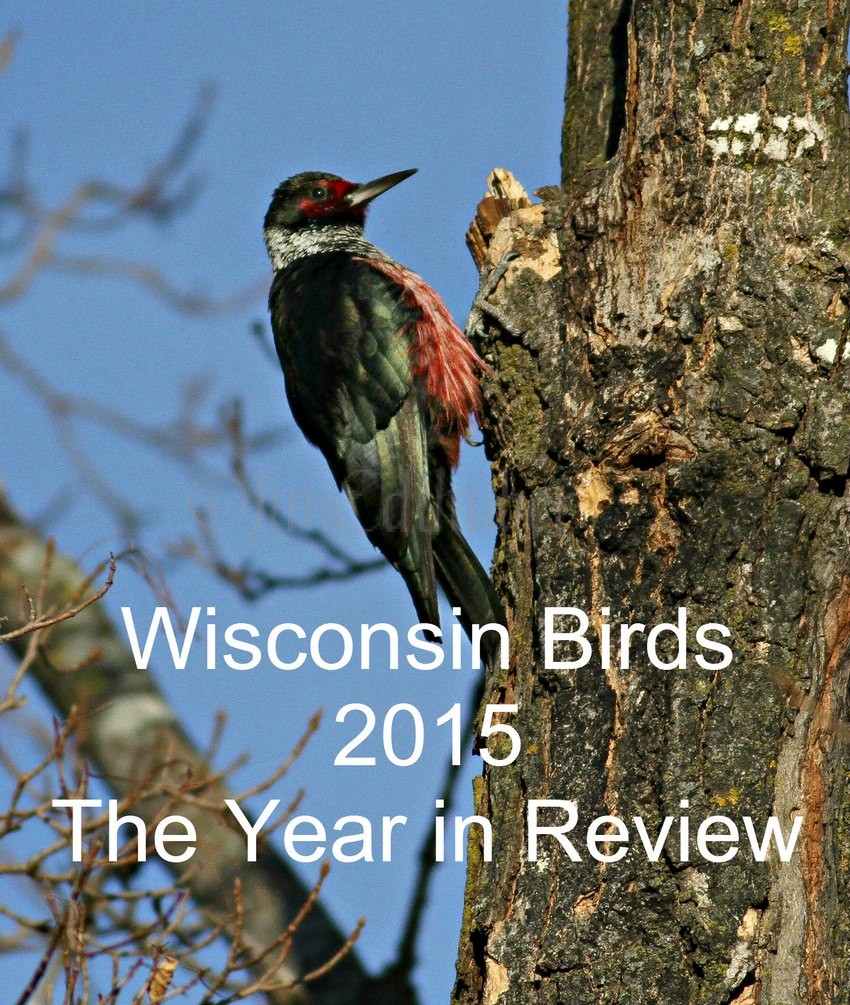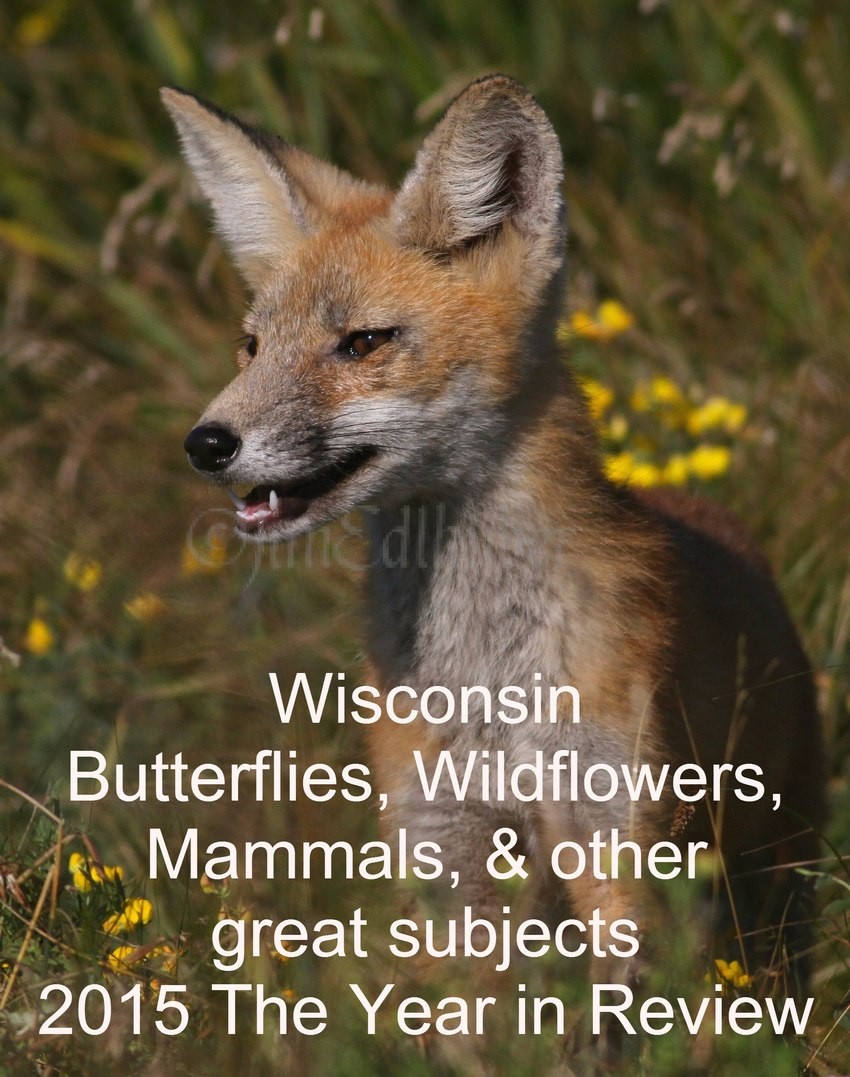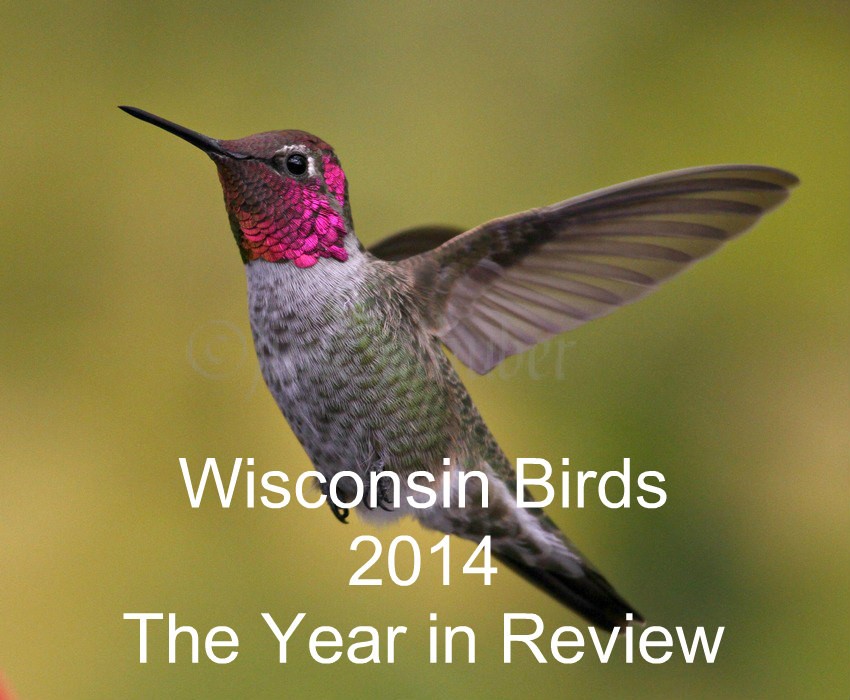I stopped at Bradford Beach in Milwaukee at sun up this morning and the beach had no shorebirds, just a few gulls. I birded Lakeshore State Park, the Whimbrel was still present there. I headed back to Bradford Beach for another check. As I started to walk the beach I noticed 2 plovers towards the north end, they appeared to be juveniles. After viewing my images they are certainly American Golden-Plovers. They have the gray belly and long wings. These birds were hardly scared by walking dogs on the beach. They gave nice views as they feed along the beach on the algae mat eating worms. Spencer was present and got in on some of the nice viewing as did Bruce who was with me. Also present were 7 Sanderlings. Bradford Beach just continues to amaze me. Images were taken on September 24, 2014, some recent images were taken on September 26, 2014.
American Golden-Plover
Binomial name: Pluvialis dominica
Category: Lapwings and Plovers
Size: 10.5” long, 26” wing span
Weight: 5 Oz.
Habitat: Breeding grounds are the Arctic tundra in northern Canada and Alaska. It prefers short vegetation on rocky slopes. This bird winters in central and south America on grasslands. During migration it stops at prairies, tilled farmlands, airports, pastures, mudflats, shorelines, golf courses and beaches.
Diet: Insects, crustaceans, snails, seeds and sometimes berries.
Nesting: Nest is a shallow bowl on the ground. The bowl can be lined with lichen, also leaves and grasses can be used. The eggs are incubated by the adults, males during the day, females at night lasting about 26 days. Both adults also defend the nesting site and care for the young chicks. The young chicks are lead to the forging areas and within a few hours after hatching start to find food on their own.
Cool fact: This birds migratory journey is one of the longest of any shorebird.

